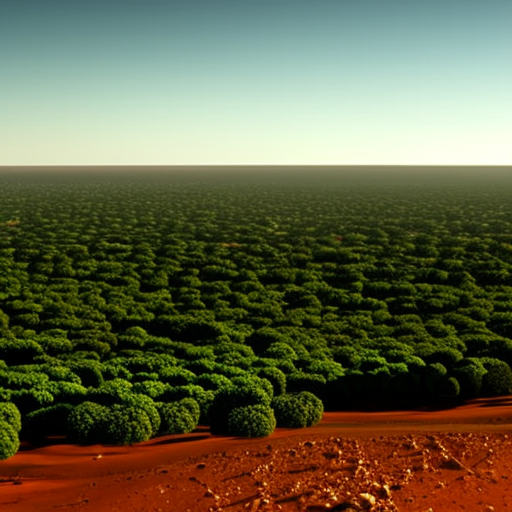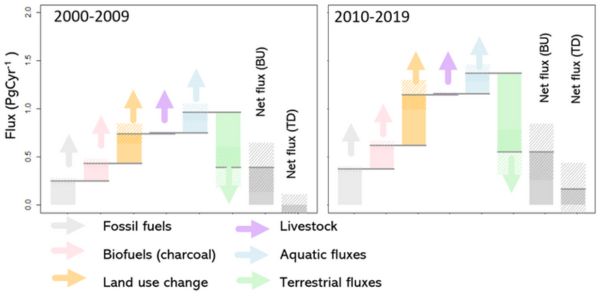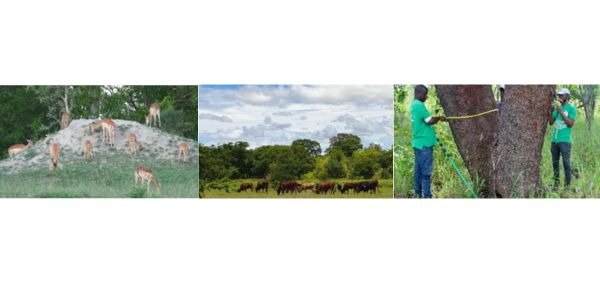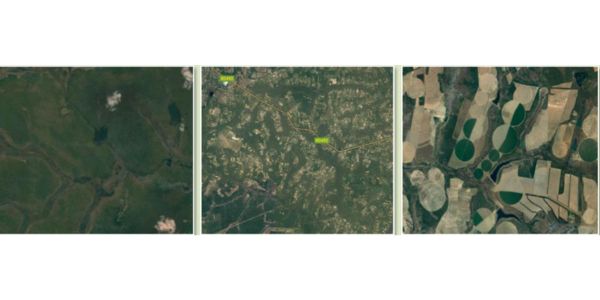
Research Reveals Africa’s Transition from Carbon Sink to Carbon Source
– Wits University
Introduction
In only nine years between 2010 and 2019, Africa has turned from being a net carbon sink to being a net carbon source. This transition has significant implications for global climate change and the achievement of the Sustainable Development Goals (SDGs).
Africa’s Carbon Cycle

New research by a team of researchers from the Futures Ecosystems for Africa programme, based at the University of the Witwatersrand in South Africa, has found that in the years between 2010 and 2019, the continent of Africa has transitioned from being a slight net carbon sink to a slight net carbon source. Overall, it is estimated that Africa is a source of 4.5 petagrams, or 4.5 billion metric tons, of carbon dioxide equivalents per year.
Impact on Global Greenhouse Gas Emissions
While Africa has been responsible for about 4% of the anthropogenic greenhouse gas (GHG) emissions globally, it has also been offering climate services to the globe through intact ecosystems in the tropics that have been sequestering more GHGs than were released through human activities. However, in the last decade, the rate at which carbon is being released from the continent has increased.
According to Professor Sally Archibald, Principal Investigator at the Future Ecosystems for Africa Program and Professor in the Wits School of Animal, Plant and Environmental Sciences at Wits University, “In terms of global numbers, this means Africa still hovers around 4% of fossil fuel emissions, but actually emits nearly 40% of the global emissions from land use, and is now, for the first time, contributing 3-5% of the growing amount of GHGs in the atmosphere.”
Population Growth and Key Factors
The population of Africa, currently at about 1.4 billion, is set to exceed 2 billion by 2040. This population growth, combined with key factors such as fossil fuel burning, methane emissions from livestock, and land use changes for agriculture, has contributed to the rise in greenhouse gas emissions from the continent.
Assessment of Africa’s Carbon Budget

To estimate Africa’s carbon budget, researchers followed the budget assessment protocol laid out by the REgional Carbon Cycle Assessment and Processes (RECCAP2). They considered all major potential carbon sources, including human sources such as agriculture and fossil fuel emissions, as well as natural sources such as termites and wildfires. They also took into account natural sinks, such as grasslands, savannas, and forests.
Carbon Emissions and Natural Carbon Sinks

Overall, it was estimated that Africa was a source of 4.5 petagrams, or 4.5 billion metric tons, of carbon dioxide equivalents per year. Land use emissions were found to be higher than fossil fuel emissions, with both categories experiencing rapid growth. Natural ecosystems continue to act as carbon sinks, taking up about 30% of the carbon emitted through human activities. However, the expansion of agriculture and increasing livestock numbers have impacted Africa’s role in the global carbon cycle.
Implications for Achieving Net Zero
The information from this research on Africa’s carbon budget is crucial for identifying the most important aspects of the greenhouse gas cycle to be managed in order to achieve net zero emissions and restore Africa’s role as a carbon sink. Investing in carbon-neutral energy sources could reduce about 30% of Africa’s anthropogenic emissions. However, novel approaches to managing landscapes for livelihoods and carbon storage are needed to slow emissions from agriculture and land use
SDGs, Targets, and Indicators
1. Which SDGs are addressed or connected to the issues highlighted in the article?
- SDG 13: Climate Action
- SDG 15: Life on Land
2. What specific targets under those SDGs can be identified based on the article’s content?
- SDG 13.2: Integrate climate change measures into national policies, strategies, and planning
- SDG 13.3: Improve education, awareness-raising, and human and institutional capacity on climate change mitigation, adaptation, impact reduction, and early warning
- SDG 15.1: Ensure the conservation, restoration, and sustainable use of terrestrial and inland freshwater ecosystems and their services
- SDG 15.2: Promote the sustainable management of all types of forests, halt deforestation, restore degraded forests, and substantially increase afforestation and reforestation globally
3. Are there any indicators mentioned or implied in the article that can be used to measure progress towards the identified targets?
- Indicator for SDG 13.2: Number of countries with integrated climate change mitigation, adaptation, impact reduction, and early warning measures
- Indicator for SDG 13.3: Number of people who have been educated, trained, or sensitized on climate change mitigation, adaptation, impact reduction, and early warning
- Indicator for SDG 15.1: Proportion of important sites for terrestrial and freshwater biodiversity that are covered by protected areas
- Indicator for SDG 15.2: Forest area as a proportion of total land area
SDGs, Targets, and Indicators
| SDGs | Targets | Indicators |
|---|---|---|
| SDG 13: Climate Action | 13.2: Integrate climate change measures into national policies, strategies, and planning 13.3: Improve education, awareness-raising, and human and institutional capacity on climate change mitigation, adaptation, impact reduction, and early warning |
Indicator for 13.2: Number of countries with integrated climate change mitigation, adaptation, impact reduction, and early warning measures Indicator for 13.3: Number of people who have been educated, trained, or sensitized on climate change mitigation, adaptation, impact reduction, and early warning |
| SDG 15: Life on Land | 15.1: Ensure the conservation, restoration, and sustainable use of terrestrial and inland freshwater ecosystems and their services 15.2: Promote the sustainable management of all types of forests, halt deforestation, restore degraded forests, and substantially increase afforestation and reforestation globally |
Indicator for 15.1: Proportion of important sites for terrestrial and freshwater biodiversity that are covered by protected areas Indicator for 15.2: Forest area as a proportion of total land area |
Behold! This splendid article springs forth from the wellspring of knowledge, shaped by a wondrous proprietary AI technology that delved into a vast ocean of data, illuminating the path towards the Sustainable Development Goals. Remember that all rights are reserved by SDG Investors LLC, empowering us to champion progress together.
Source: wits.ac.za

Join us, as fellow seekers of change, on a transformative journey at https://sdgtalks.ai/welcome, where you can become a member and actively contribute to shaping a brighter future.






